What Presser Foot To Use For Piping
Piping is a nifty item for adding some dissimilarity or pop of colour. You tin buy set up-made pipe, but the quality of the fabrics used is frequently wanting.
Perchance you accept, similar me, looked unsuccessfully for piping in that special color that matches your project perfectly, or wanted to make piping from a sure cloth? Then this easy tutorial is for yous!
Today I'll testify y'all how to make custom pipe – no special feet needed, just with the standard equipment of my bernette 38 (and many other BERNINA machines).
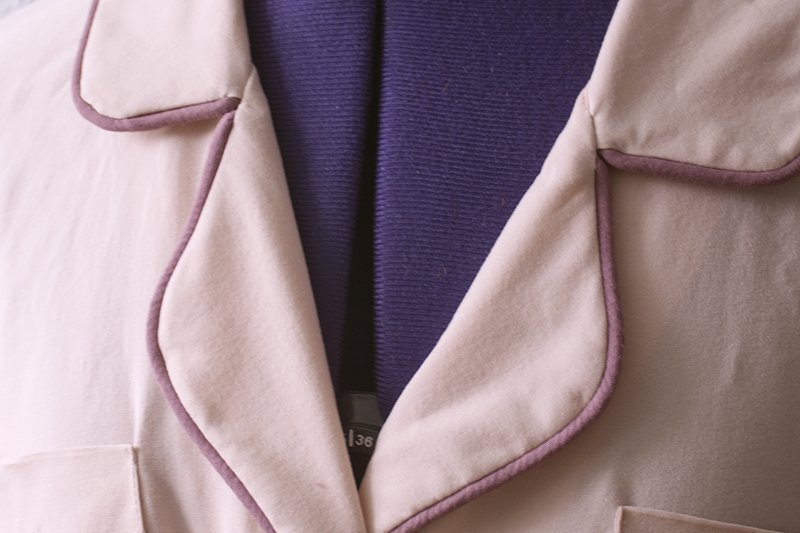
How to make piping with a zipper pes
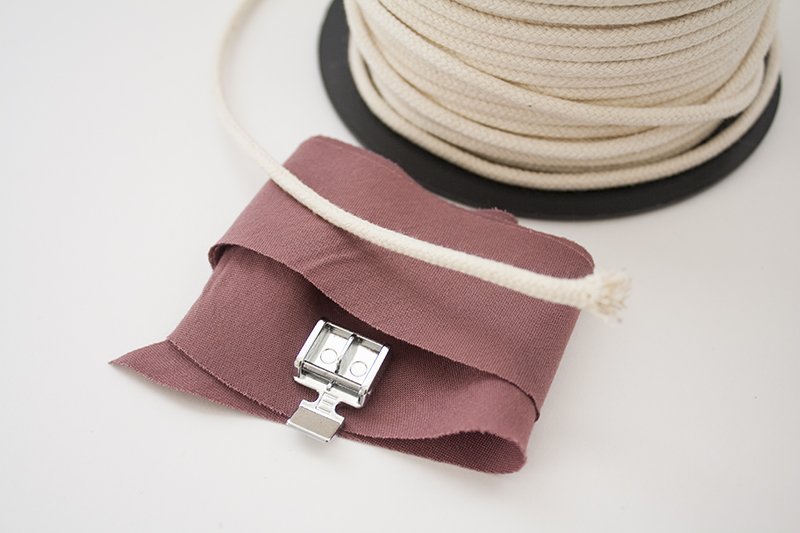
Here'southward what you'll need for making pipage:
- bias record – I cut mine from my textile, just the store-bought one works, likewise. If you choose a wider ane y'all're on the safe side. Keep in mind that later on encasing the cord with the bias tape, you still demand some "seam allowance". I cut my bias record 4 cm / i.57″ wide to get a seam allowance of 1.5 cm / 0.half dozen″.
- cord – mine was 3 mm / 0,12″. If you are using cotton cord, you might want to pre-wash information technology, because cotton fiber can compress in the washing automobile. You don't desire the piping to shrink on your finished garment.
- zipper foot – standard equipment that comes with my bernette 38
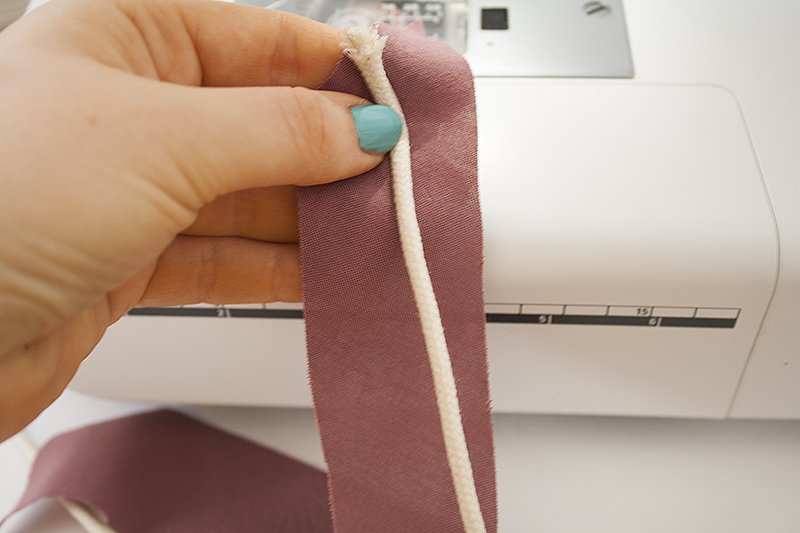
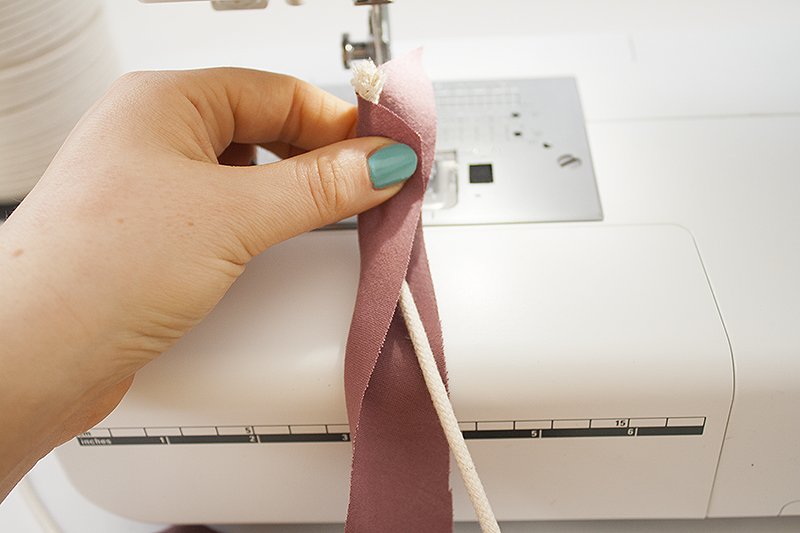
Identify the cord in the middle of the bias tape. Fold it in one-half, and so that the raw edges align and the cord sits in the heart/the fold, being encased by the bias tape.
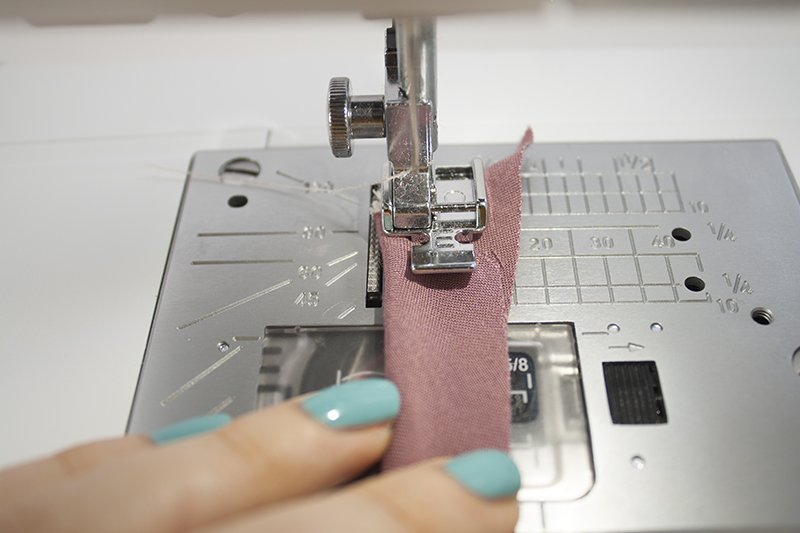
Adhere the zipper foot and identify the bias record-and-string-sandwich nether the foot. The thick side with the encased cord is, equally you can meet, on the left, placed directly under the notch in the zipper foot that is perfect for compensating summit differences like in this instance.
While sewing, guide the encased cord under this notch, making sure the seam gets placed correct adjacent to the cord.
Sew using a straight stitch, a longer sew length of 4.v-5 is fine. This is a makeshift seam to make sure everything stays in place; we'll secure everything when we utilise the pipage betwixt a seam.
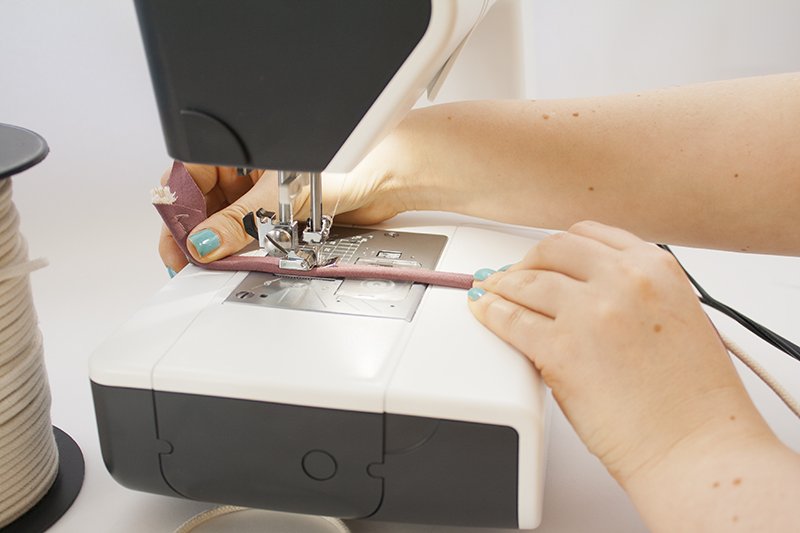
Depending on your string, y'all might want to gently pull the pipe to help the feeding dogs.
Information technology'll get clear fast whether or not your machine needs a little assist and so that the pipage is sewn smoothly.
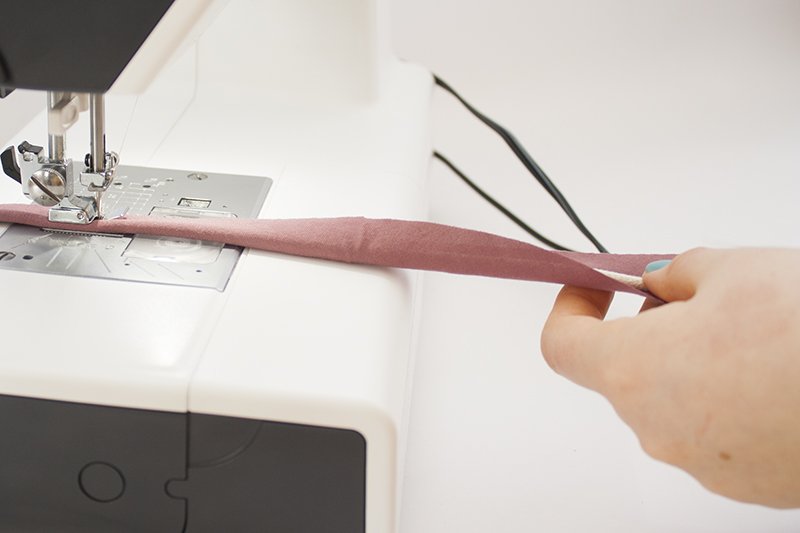
While working on the piping, stitch only a few inches at a time, and set up the side by side few inches of the piping past placing the cord in the eye of the bias tape and folding it over. Hold with ane hand, secure the layers with the seam, prepare the next few inches, and so on.
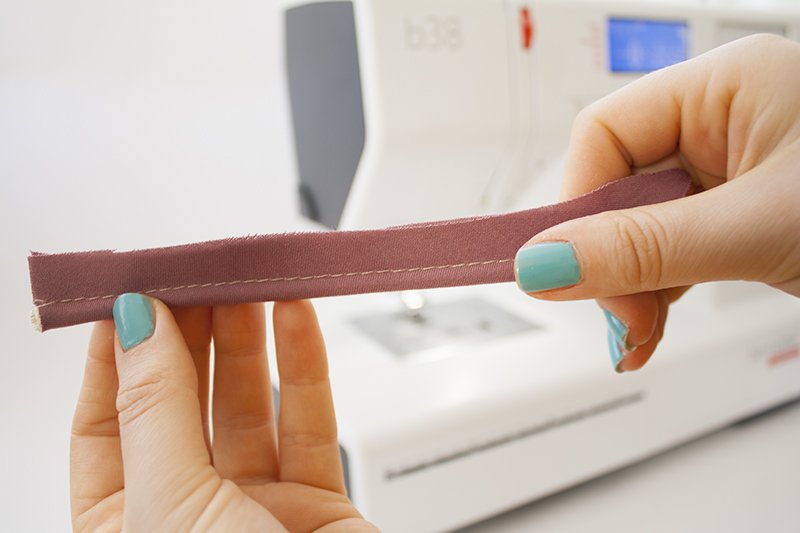
Above, y'all tin see a finished piece of pipage. The seam should run directly side by side to the cord and so information technology is encased snugly.
Next to the encased cord, I accept enough seam allowance left. Information technology exactly matches the seam assart of the seam I want to place the pipage on. If the piping seam allowance is too wide, yous can just trim it a picayune and then sew all the layers with the edges aligning.
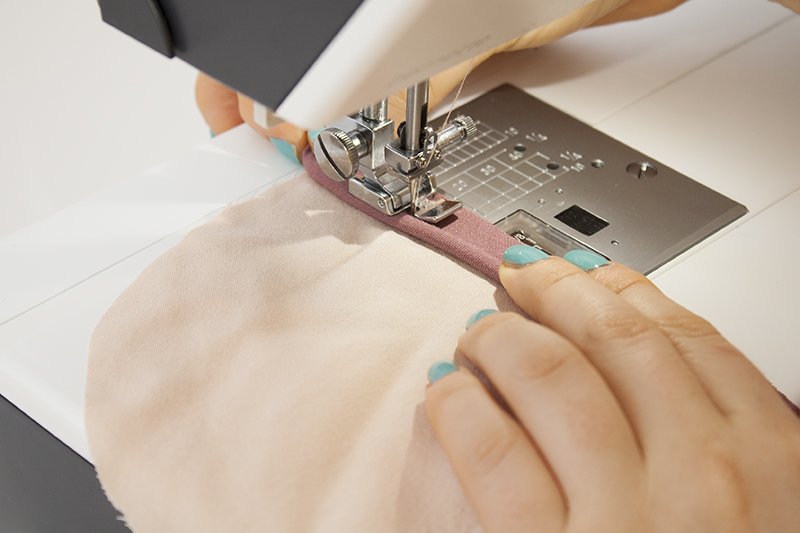
Now, let's get to sewing the piping to our fabric.
Identify the pipe onto one of the pieces where you'll want it to sit down, the part with the string facing towards the middle.
Ideally, your seam allowances are identical, and you can merely align the raw edges.
If the seam assart of your piping is smaller, you lot'll need to measure the difference and pin it in place accordingly.
Like when making the piping, use the zipper human foot to baste the piping in identify with a long stitch length.
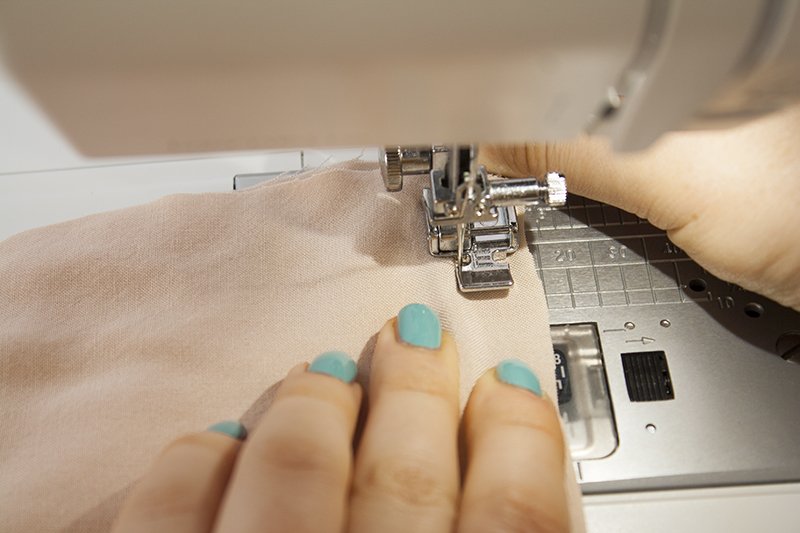
Now place the second piece on pinnacle of your offset piece. Marshal the edges and pin in place if desired.
You'll desire the seam to sit down right next to the thick function of the piping, so that just this part is visible and everything else is concealed between the layers.
Utilise the notch in the sewing foot and the string equally a guide. Place the fabric then that the needle will dip into the fabric correct adjacent to the cord.
Yous might want to get the feel for information technology first, so practice on a flake if desired.
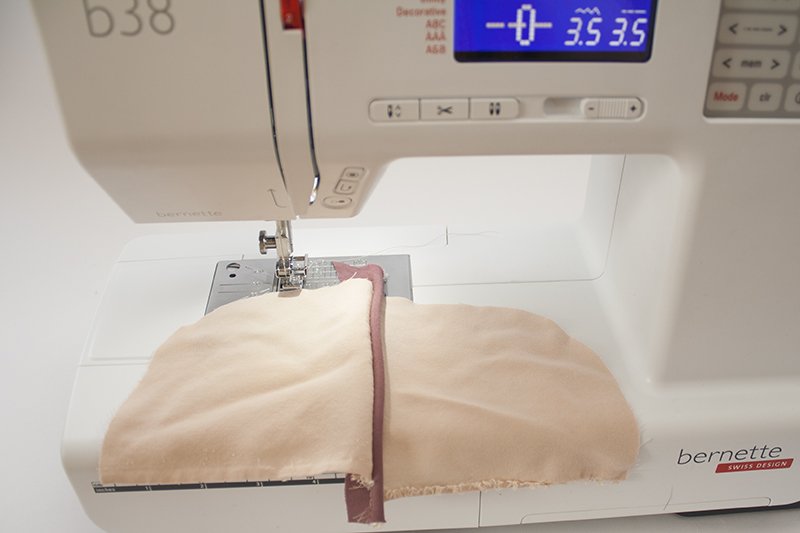
If you don't place the ridge of the pipe directly under the notch and next to the guide of the sewing foot, the string won't be enclosed betwixt the layers snugly, and parts of the bias tape seam allowance will exist visible. Like in the picture show above, you'll only want the thick part of the pipage to be visible.
If the bias tape is still visible, just stitch the part of the seam again, trying to get the seam closer to the string.
This method works neat for cords that aren't super thick – if you want to make really big piping like you can find on upholstery, you might need to switch to a piping foot.
What Presser Foot To Use For Piping,
Source: https://blog.bernina.com/en/2017/06/tutorial-how-to-make-and-sew-piping-no-special-feet-needed/
Posted by: manzeroravialf.blogspot.com


0 Response to "What Presser Foot To Use For Piping"
Post a Comment